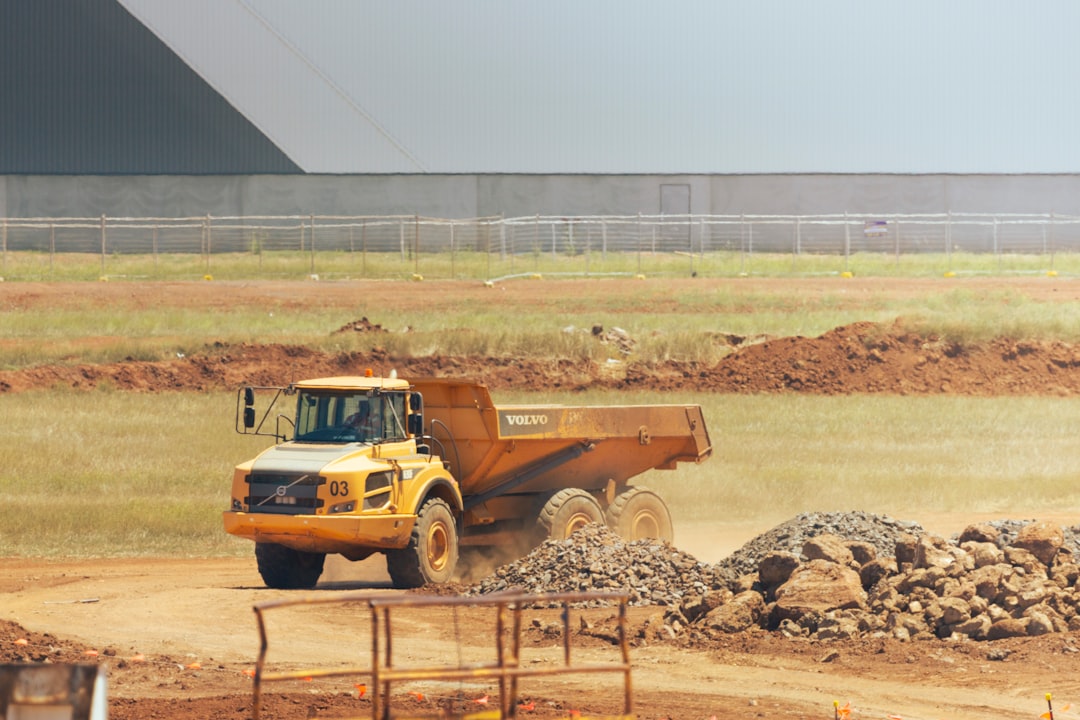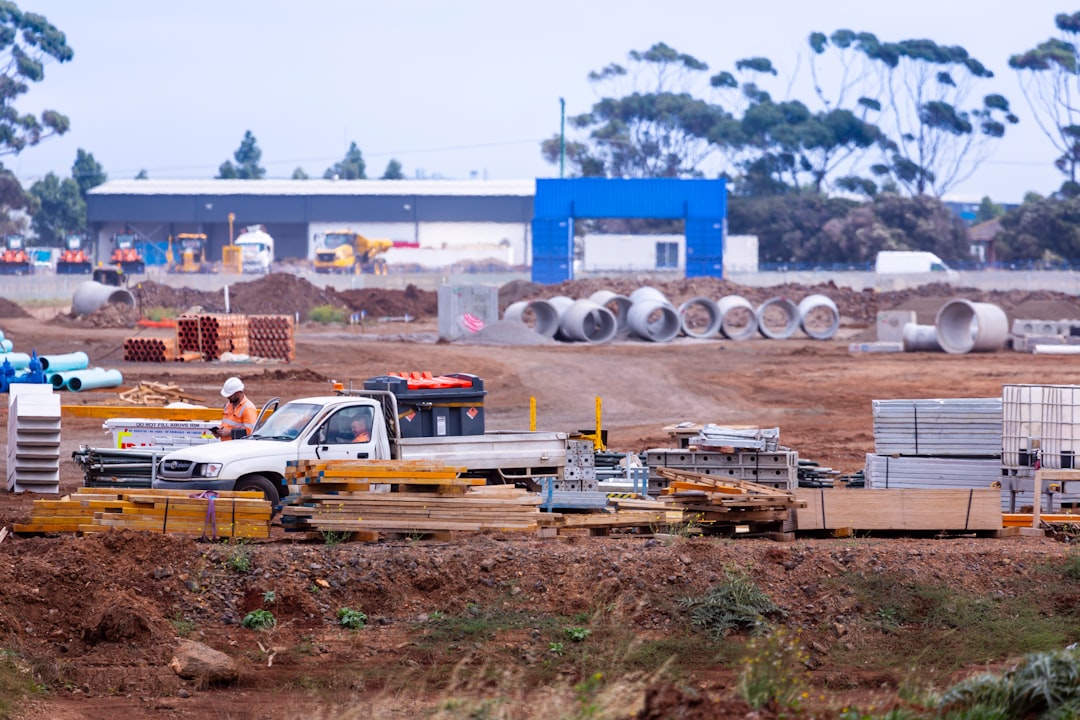

Engage prospects with a scan and streamline customer engagement with FREE QR code marketing tools by Sona – no strings attached!
Create a Free QR CodeFree consultation

No commitment

Engage prospects with a scan and streamline customer engagement with FREE QR code marketing tools by Sona – no strings attached!
Create a Free QR CodeFree consultation

No commitment
Landscape contracting companies are accelerating their shift toward digital marketing, aiming to connect busy field operations and project sites with increasingly savvy prospects. Yet a persistent challenge remains: while offline touchpoints like on-site visits, printed materials, or face-to-face consultations generate real customer interest, vital details and strong leads often vanish before making it into the sales pipeline. Many teams find it tough to track which specific physical interactions actually drive new business, especially when prospects do not take time to fill out forms or follow up digitally.
QR codes act as a crucial bridge at this intersection. Integrating QR codes into physical touchpoints allows landscape contractors to immediately transform offline interest, such as a passerby admiring a finished project or a homeowner holding a business card, into an actionable digital path. Industry trends show that QR codes are a low-barrier and low-cost way to streamline lead capture, route inquiries straight to booking or feedback, and instantly connect prospects to detailed service menus or portfolios, all without the need for an app or manual data transfer. Learn more about QR codes in marketing and practical QR benefits for field-driven businesses.
Modernizing interactions with QR solutions leads to greater efficiency for landscape teams and helps close the gap on lost opportunities and unknown leads. By making every scan a traceable and enriched interaction, companies can capture high-value prospects who might otherwise remain anonymous or slip past your CRM. This seamless bridge between physical impressions and digital actions supports more precise marketing, widens the funnel for qualified leads, and delivers concrete, trackable ROI in the competitive landscaping market.

In landscape contracting, key business information frequently gets lost between the field and the office, which makes it tough to capitalize on prospects who express interest on the spot. When clients engage through traditional brochures or in-person events, critical data may never get recorded, resulting in missed follow-ups and wasted marketing spend. QR codes solve that problem by converting any physical moment of interest into a branded digital experience that captures intent and contact details immediately.
The quickest wins come from replacing analog processes with QR-driven workflows. Printed brochures can route to dynamic service menus and estimate forms, business cards can save contact details with a single scan, and paper sign-up sheets at home shows can become dynamic forms that sync to your CRM. These changes reduce manual work for crews and office staff, while giving prospects a fast and intuitive way to engage when their interest is highest. If you’re collecting interest via forms, consider using a Google Forms QR to speed up capture.
Advanced QR management platforms let teams oversee dynamic code experiences, providing built-in tracking and CRM integration. For example, shifting to QR-based quote requests at a home show enabled one landscape company to capture more complete lead data and accelerate follow-up, which resulted in more proposals delivered within 24 hours and a measurable increase in booked consultations. See how it works in Sona QR’s product overview.

A recurring problem in landscaping is the lack of insight into which physical campaigns actually drive customer decisions, especially when many leads interact but remain invisible. Printed signs, business cards, or vehicle branding are common, but without a simple method to tie real-world engagement to follow-up actions, contractors may never know which companies or homeowners showed genuine purchase intent. QR codes turn that passive exposure into a measurable, actionable step.
They also reduce friction for the buyer. People who see your yard sign or watch crews transforming a property want a quick way to get details, book a consultation, or save your contact info. Asking them to call or type a URL creates delay and drop-off. A scan, in contrast, gives instant access to what they need and gives your team clear visibility into who engaged and where. For broader strategy, explore modern landscaping marketing approaches that pair well with QR capture.
QR code placement on appointment cards, yard signs, and vehicle wraps is proving essential for surfacing unknown leads and ensuring no prospect from in-person campaigns goes untraced. When done well, you get both better customer experiences and better attribution, which is the combination that drives sustained growth.

Misaligned communication channels and difficult data collection can cause valuable prospects to drop off before becoming warm leads. QR codes open up user-friendly contact pathways that promote action while creating cleaner data trails. In landscaping, a mix of formats covers the bulk of needs, from fast contact saves to rich portfolio views.
Dynamic capabilities matter especially in this vertical because service menus, seasonal promotions, and availability windows change frequently. When your QR codes can be updated after printing, your yard signs, door hangers, and equipment decals keep working all season without reprint costs.
For landscape contractors, campaign-specific web links for quotes and vCard contact saves maximize the odds that high-intent yet anonymous prospects quickly become identifiable leads. Dynamic QR formats deliver the flexibility to swap destinations by season, service type, or neighborhood, which keeps your campaigns relevant and measurable.

Identifying and nurturing high-value leads hinges on reaching people at their point of highest intent. In landscape contracting, that moment often occurs at a finished jobsite or community event when the quality of your work is on full display. Relying only on word-of-mouth or hoping prospects take action later rarely surfaces those ready to buy.
QR codes turn this intent into outcomes. They also give you location-level intelligence, so you can see which neighborhoods respond to hardscaping projects versus maintenance offers and which signage placements outperform. With that insight, you can iteratively improve your marketing mix by doubling down on what resonates.
Prioritizing QR deployments in these high-traffic, location-specific spots provides greater transparency into lead origin and enables real-time campaign adjustments based on actual buyer behavior. Over a season, you will learn which placements pull in design build leads, which draw maintenance inquiries, and where to shift production and sales resources.

Falling behind competitors or missing cross-sell opportunities is common when field engagement is not systematically captured. QR codes establish direct conversion paths at every in-person touchpoint, so crews and marketers can coordinate without adding friction for the client.
These use cases move the needle because they meet prospects where they already are. A homeowner who just admired a new patio wants to see similar projects and an estimate range. A property manager who stops at your booth wants a quick way to request a site walk. A satisfied maintenance client wants to leave a review or schedule additional services. QR codes make each of those outcomes straightforward.
Each scenario turns overlooked or anonymous interactions into rich, actionable sales conversations, which reduces the risk of high-intent leads slipping through the cracks. Over time, you build a data-backed view of what clients want, where they engage, and how to nurture them efficiently.
A major pain for landscape contractors is knowing which prospects to nurture and which locations yield actual revenue, especially when traditional follow-ups lag or contact records are incomplete. Every QR scan is a signal about who is interested, where they are, and which service caught their attention. If you segment those signals, you can retarget with precision.
Start by creating unique QR codes for each stage of the buyer journey. Awareness placements like yard signs can drive to inspirational content and soft lead capture. Consideration placements like brochures can open a gallery or calculator. Conversion placements like pricing sheets or neighborhood promotions can drive to booking. Tag each code so your CRM and ad platforms can build audiences automatically.
If you’re building nurture programs from scan data, consider Sona’s Playbook on intent-driven retargeting for practical audience activation ideas.
Consistent pain points in landscaping marketing include unclear attribution across print, digital, and field efforts, and a weak feedback loop on which tactics generate actual sales. QR codes integrate all channels, connecting every physical and digital asset into a single campaign ecosystem that is both measurable and adaptive. By standardizing on QR-driven entry points, you consolidate data and reduce operational friction.
The key is to design each code with a clear role in your broader funnel. A door hanger might drive to a quick quote form, a truck decal might drive to a portfolio highlight, and a sponsorship banner might drive to a community-specific offer. When all scans land in the same analytics and CRM, your team gets a unified view of engagement, conversion, and revenue attribution.
QR codes serve as the offline onramp to your digital marketing engine. They also unlock a new layer of data collection across channels that were once difficult to measure. With a centralized platform like Sona QR, you can manage all your codes, monitor performance, and sync scan data with your CRM and ad platforms so your campaigns keep improving with every scan. Start creating QR codes for free.
Even strategic marketing efforts fail when lead capture and campaign performance are not closely monitored. Modern tools now enable landscape contracting teams to execute, audit, and iterate on QR-based campaigns without heavy manual effort. This checklist walks you through clear steps that translate intent in the field into trackable outcomes in your CRM.
Approach the process as a continuous loop. Launch quickly with a focused use case, measure engagement, and adapt placements and messaging based on real data. Over time, your QR program becomes a repeatable growth engine that your crews and office team can run with confidence.
Start by defining a specific business goal and the physical context where scanning will happen. Examples include instant quote requests from project board signage, same-day consultation bookings at a home show, or post-install maintenance upsells via stickers placed near irrigation controllers.
Think about what currently gets lost. If untracked flyer leads are the issue, design a code that routes to a short form with a neighborhood-specific promotion. If missed calls after hours are a problem, route after-hours scans to a scheduling tool that captures preferred appointment windows.
Choose static codes for destinations that never change, such as a permanent brochure PDF. Choose dynamic codes for campaigns that need tracking, frequent content updates, or granular attribution by placement and neighborhood. For growth-focused teams, dynamic codes are usually the default since they support versioning, A/B testing, and data capture.
Map code types to your objectives. For example, a dynamic code on a truck can rotate seasonal offers, while a static vCard on a business card can ensure your contact info is easy to save. When in doubt, use dynamic so you can update destinations without reprinting.
Brand your codes with a subtle logo, strong contrast, and a clear visual frame that draws the eye. Include a concise call to action near the code, such as Scan to view patio gallery or Scan to book a free consult. Size appropriately for scanning distance and test under field conditions.
Test across multiple devices, lighting situations, and angles. Take a laminated yard sign into direct sun and scan from the sidewalk. Verify that the landing page loads quickly on cellular networks and that forms pre-fill relevant fields. Fix friction before you scale.
Distribute codes where your audience already is. Place them on vehicles, jobsite boards, door hangers, postcards, and event signage. Prioritize underperforming locations or channels you want to measure more precisely, such as new neighborhoods or a refreshed service line. For print, try a customizable flyer template.
Match placement to expected behavior. A moving truck needs a larger code and very short CTA, while a yard sign can support a more descriptive message. An event booth can include multiple codes, such as one for downloading a portfolio and another for entering a giveaway.
Monitor scan rates by placement, time of day, and device type. Review engagement time and downstream conversion, including form completion and booked appointments. Identify quick wins, such as a yard sign that outperforms average, and reallocate budget or replicate messaging in similar neighborhoods.
Run controlled tests. A/B test CTAs, landing page layouts, and incentive structures. Rotate seasonal offers via dynamic codes to keep print assets fresh. Feed your findings into a central dashboard so marketing and operations can align on what to scale next.
With the right platform, these steps help contractors surface late-stage intent and respond before prospects reach a competitor’s channel. Over multiple campaigns, you will build a playbook for placements, messages, and offers that consistently translate physical interest into revenue.
A perennial pain for landscape businesses is the inability to map specific touchpoints, like a site sign scan or a mailer visit, to actual sales and revenue. Without this clarity, it is difficult to prove which efforts pay off and where marketing dollars should go. QR codes, paired with the right analytics stack, transform those blind spots into actionable insight.
Start with foundational metrics such as total scans, unique scanners, scan-to-lead conversion rate, and scan-to-appointment conversion rate. Layer in placement-level attribution, like which truck decals or neighborhood signs are producing the strongest leads. Then connect scan events to CRM opportunities and closed revenue so you can compare ROI across channels.
One landscaping company connected spring cleanup flyer scans directly to final invoices, gaining true visibility into which seasonal blitzes converted to business. With this clarity, they reallocated budget to high-performing zip codes, updated weaker offers, and reduced overall cost per booked job. Over time, scan-to-revenue attribution becomes the foundation for confident, data-driven growth decisions.
Landscape teams often struggle to maximize ROI because of generic QR use, unclear staff roles, or poor tracking granularity. Small tactical shifts can dramatically increase engagement and measurement. Focus on making each code purposeful, contextual, and easy to scan, then ensure follow-up is automated and timely.
Train your crews to recognize QR moments in the field. A foreman can invite a satisfied client to scan and book a maintenance visit. A designer can point a homeowner to a gallery scan during a walk-through. When staff view QR codes as part of the customer experience, adoption and impact rise. For broader local reach, complement QR with local SEO tips.
These practices transform everyday project touchpoints into powerful, data-driven acquisition and retention tools. As you scale, your QR program will not just capture demand, it will also shape the buyer journey with timely, relevant nudges that drive more revenue at lower cost.
Missed connections with decision-makers and referral partners can stall growth for even experienced landscape contractors. The following real-world applications illustrate how QR strategies shift engagement from passive brand exposure to qualified, actionable interactions. They also show how small design choices, like the right CTA or image pairing, have an outsized effect on scan rates.
Consider how these examples can be replicated in your market with localized messaging, seasonally relevant content, and unique codes per placement. The key is marrying the right physical touchpoint to the right digital destination.
Encouraging customer-initiated reviews or neighbor referrals via a QR scan after project completion helps ensure ongoing pipeline growth from satisfied, previously untraceable clients. As you test new placements, keep your analytics tight so you can spot creative ideas worth scaling.
Landscaping companies frequently see QR initiatives underperform due to scanning challenges, poor campaign tracking, or lack of staff engagement. Addressing practical issues in design, placement, and process is key for sustained lead flow. The most successful teams set clear guidelines, run field tests, and integrate scans with their CRM from day one.
Avoid the trap of one-size-fits-all codes. If every sign routes to the same homepage, you will sacrifice both conversion and trackability. Instead, map codes to specific destinations and role-based experiences, which makes it easier for prospects to take the next step and for your team to measure impact.
Consistent review and adjustment based on performance data ensures every QR investment continues to surface quality leads and customer feedback. Over time, these small operational improvements compound into a durable competitive advantage.
Landscaping companies face unique challenges bridging the gap between physical and digital, and the cost of missing high-value prospects due to untracked or anonymous engagement is significant. QR codes make every physical touchpoint measurable and actionable, surfacing leads and customer insights that might otherwise be missed. By applying a systematic QR strategy, landscape contractors can turn brochures, vehicles, and job sites into rich sources of sales and retention, while generating the attribution data needed for smarter, future-proofed growth.
For landscape contracting businesses, QR codes offer more than convenience, they serve as a pivotal strategy for closing the gap between offline engagement and digital follow-through. By integrating QR-driven workflows and a platform like Sona QR, companies can detect high-intent prospects early, rapidly capture essential contact data, and tie every touchpoint directly to revenue outcomes. Embracing these technologies allows teams to reduce lost opportunities, support more timely outreach, and bring clarity to campaign effectiveness, so every client interaction propels stronger, more measurable growth. Start creating QR codes for free.
QR codes have transformed landscape contracting companies from traditional service providers into tech-savvy growth engines. Whether it’s streamlining client communication, enabling instant access to project portfolios, or simplifying service scheduling, QR codes replace cumbersome processes with seamless, mobile-friendly interactions that capture real-time engagement data to turn every touchpoint into a powerful business opportunity. Imagine clients effortlessly accessing your latest work or booking consultations with a simple scan—boosting both satisfaction and conversion rates.
With Sona QR, you can create dynamic, trackable QR codes in seconds, update campaigns instantly without reprinting, and link every scan directly to revenue-generating actions. No more missed leads or outdated materials—just smarter, more efficient ways to attract and retain your ideal customers. Start for free with Sona QR today and transform every scan into a new project, a loyal client, or a growing referral.
QR codes transform offline interest into immediate digital connections by enabling prospects to access service menus, portfolios, and booking forms quickly, creating traceable interactions that boost engagement and lead capture.
Best practices include assigning unique QR codes to each asset, pairing codes with clear, context-specific calls to action, using UTM parameters for accurate tracking, deploying codes in high-impact physical locations, and training staff to encourage scanning.
QR codes provide detailed scan data including location, time, and campaign source, which when synced with CRM systems, allow companies to attribute leads and revenue to specific physical touchpoints and optimize marketing spend.
QR codes can be integrated on yard signs, project boards, business cards, vehicles, brochures, mailers, event signage, and equipment stickers to facilitate quote requests, portfolio access, maintenance scheduling, referrals, and instant contact saving.
Companies can replace manual forms and static brochures with QR-driven workflows, enabling instant lead capture, automated follow-ups, dynamic content updates, and seamless CRM integration that reduce manual work and accelerate response times.
Use Sona QR's trackable codes to improve customer acquisition and engagement today.
Create Your FREE Trackable QR Code in SecondsJoin results-focused teams combining Sona Platform automation with advanced Google Ads strategies to scale lead generation

Connect your existing CRM

Free Account Enrichment

No setup fees
No commitment required

Free consultation

Get a custom Google Ads roadmap for your business






Launch campaigns that generate qualified leads in 30 days or less.
